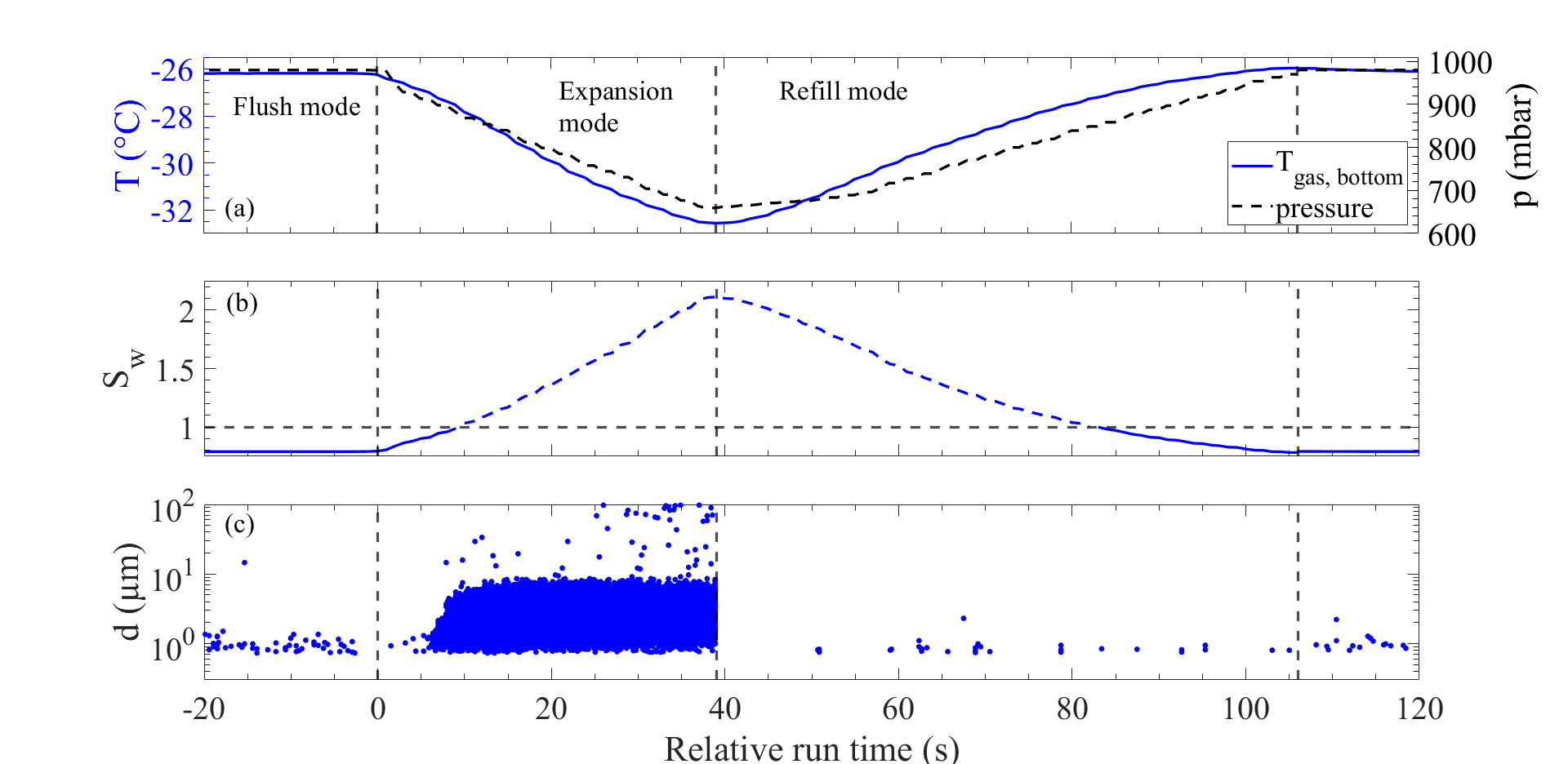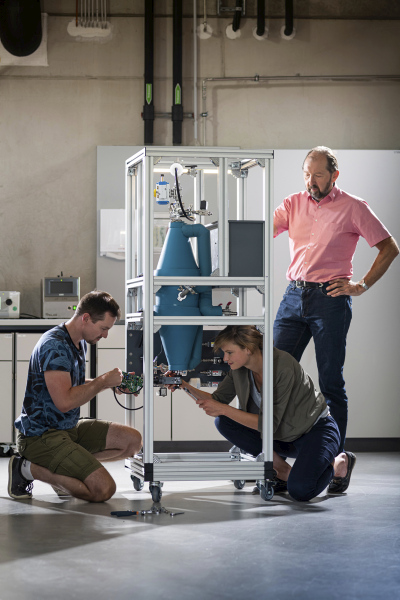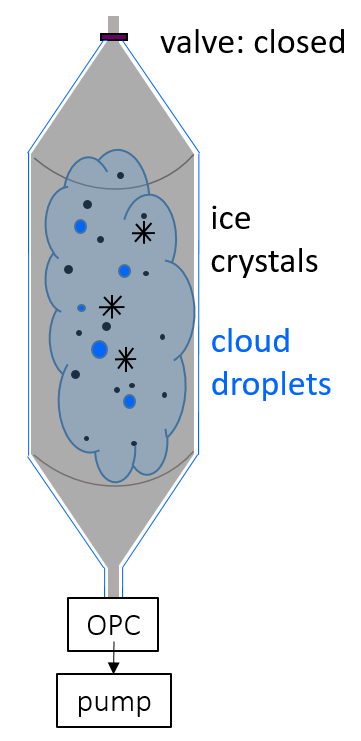Mobile Cloud Chamber PINE

PINE (Portable Ice Nucleation Experiment, Möhler et al., 2021) is a mobile cloud chamber to investigate ice-nucleating particles (INPs) relevant for ice crystal formation in mixed-phase clouds (temperature range -10°C to -35°C, water-saturated conditions) and cirrus clouds (temperature range -35°C to -60°C, water-subsaturated conditions).
Working Principle
PINE is based on the design of the AIDA chamber (Möhler et al., 2003), and mimics cloud formation upon air mass lifting. It consists of a 10 liter externally cooled vessel, through which the aerosol particles are flushed for several minutes. By closing a valve upstream of the chamber and maintaining a flow through the system, the sampled air is expanded by the pressure reduction and creates a supersaturation with respect to ice and water (mixed-phase cloud conditions) or ice only (cirrus cloud conditions). This allows the aerosol particles to activate into cloud droplets and ice crystals. An optical particle counter (fidas-pine, Palas GmbH, Karlsruhe) downstream of the chamber thereby detects the forming ice crystals (the INPs) based on their larger size as compared to cloud droplets and unactivated aerosol particles. This allows to determine a temperature-dependent INP concentration. After the expansion, the chamber is refilled to ambient pressure conditions. Such a cycle of flush-expansion-refill takes approximately 6 minutes, which allows observation of INP concentrations with a high-time resolution. PINE can be operated continuously and autonomous at constant temperature and supersaturation conditions, as well as in a temperature-scanning mode.

Features
- detection limit 0.5 INP per L (at a 6 min time resolution)
- temperature accuracy of ±1°C
- cooling rate 0.6°C per min
- application during long-term monitoring and for laboratory experiments
- commercially available at Bilfinger
Monitoring Data
INP monitoring from the PINE network


